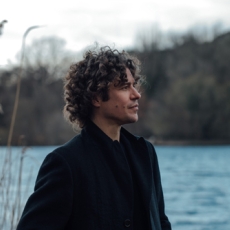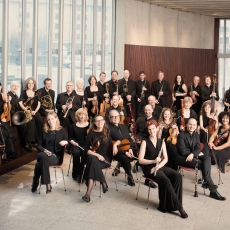Robin Ticciati & SCO - Haydn: Symphonies 31, 70 & 101 - Classical Source
The Scottish Chamber Orchestra does not claim to be a ‘period instrument' ensemble and plays at today's standard pitch. But the booklet includes a photo of the musicians in which the horns and trumpets that they hold are valve-less: horns have extensive crooks attached, the trumpets have no keys and are of the longer variety as used in the 18th-century.
Robin Ticciati takes an interestingly ‘period' approach to Haydn. Apart from the antiphonal distribution of violins, Ticciati also makes both Minuet repeats after Trio sections as well as before. Roy Goodman, Christopher Hogwood, Charles Mackerras, Roger Norrington and others have taken a similar view although it is not a theory universally accepted. Ticciati takes all repeats in the other movements and it is good to have well-balanced proportions. Apart from a couple of strange moments there is continuity of pulse throughout.
I welcome the use of keyboard continuo in Symphony No.31 and, particularly in the beautiful Adagio, I find Jan Waterfield's contribution very imaginative but she does not allow decorative supplements to the bass harmonies to over-impose. It is something of a surprise however that in such a relatively early Symphony (1765) the choice of instrument is fortepiano rather than harpsichord. The first thirty of Haydn's early keyboard Sonatas were for harpsichord and authorities suggest that the fortepiano would have begun to be used from around 1770, but then it was in existence at the time this remarkable Symphony was composed.
‘Hornsignal' is an appropriate enough name (applied many years after the work first appeared) and I like the theory by Richard Taruskin in his excellent booklet note wherein musicologist Horst Walter suggests that the nature of the horn-calls stems not from the hunt but from the use of the posthorn in the 18th-century. At this time Haydn had the brief luxury of being provided with four horns for his orchestra. No.31 is the second of two Symphonies in which he exploited these instruments while also giving solos to all the principal players. Ticciati tends toward swift tempos - the opening is really dashing and the movement is full of carefully thought-out detail - in her several upward scales, flautist Alison Mitchell sometimes slurs her runs and sometimes separates the notes. The beautiful slow movement is elegantly presented - solos from violin and cello are immaculate.
The Minuet gives cause for concern however: I find the tempo disturbingly hurried - it is performed with very light phrasing and the rhythmic solidity of this Baroque-inspired dance is not attended to. This swift approach is called into question when the Trio is reached and, entering a beat late, it fails to keep to tempo - consequently this section sounds dull and the sudden quicker speed at the return of the Minuet is disconcerting. I also disapprove of the omission of the final two notes of the Minuet both before the Trio and at the end. In the Finale, the many solos are a delight, and I enjoy the subtlety of Haydn's scoring.
Symphony No.70 of fourteen years later is a very different composition and one that deserves to be performed more often. Ticciati's rapid tempo for the opening Vivace con brio is ideal. Throughout, but notably in this movement, there are unmarked variations of dynamics - in particular the timpanist makes certain stresses and small crescendos on repeated notes - a colourful notion. The lengthy Andante benefits also from Ticciati's swifter-than-usual tempo. This gentle creation features muted violins and has a nicely sprung underlying rhythm, delicately pointed here. Although marked Allegretto the Minuet can be effective at a faster speed and here, although Ticciati presses ahead, he is not hasty; however the problem of going into the Trio ‘late' remains - more than a whole bar - but at least it is at much the same tempo. The fiercely dramatic fugal Finale is performed with force, emphasis incisively achieved - the added crescendos supporting the four-note motto make a convincing effect.
Move forward fifteen years and we come to the familiar ‘Clock' Symphony. Ticciati recognises the larger scale of the work. His tempos are similar to those of Norrington and include a nearly-as-fast reading of the tick-tock Andante where the slight added emphasis of the bassoon parts makes an amusing point. In the outer movements Ticciati's positive emphasis of phrasing, stemming the way he adjusts dynamics, is much in evidence. I have heard Colin Davis incorporate pointed phrasing of this nature, and Ticciati benefitted from his guidance. Coming to the Allegretto Minuet, a fairly brisk tempo is chosen and again there is a long gap before the Trio starts and at its end. The dashing performance of the Finale is a credit to the orchestra - fiery playing here.
The spacious acoustic of Usher Hall enhances the sound, which is realistically balanced and I like the way in which the many examples of soft playing are presented. These performances are carefully thought out: Ticciati interprets the music in a personal manner and also with character. In view of the directness of these thrusting, often joyful readings I am puzzled by those Minuet/Trio hiatuses but nevertheless these three Symphonies find the conductor seeking out the essence of Haydn with great conviction.


